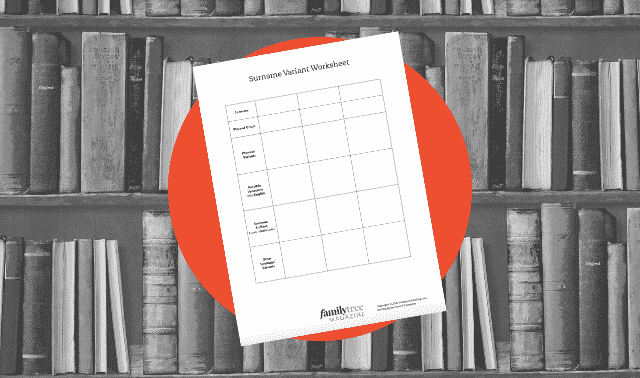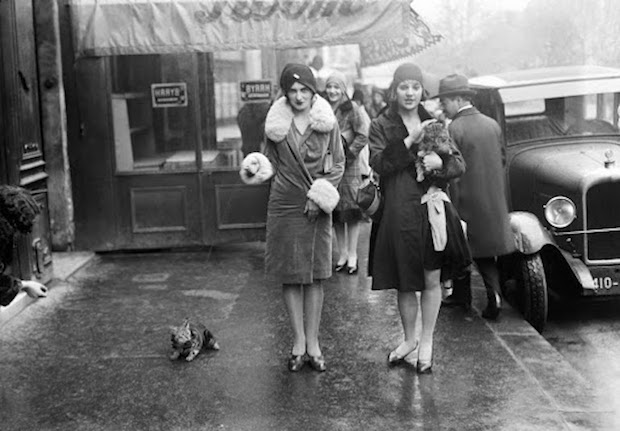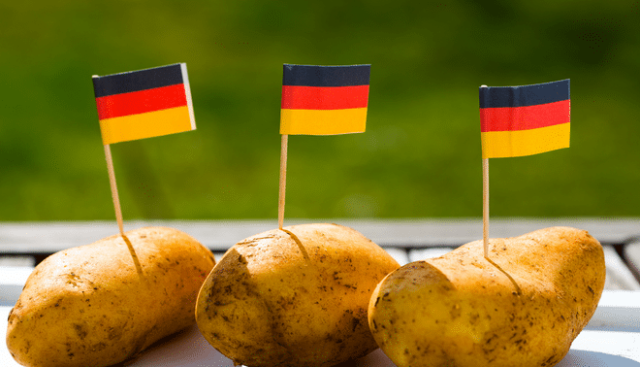Sign up for the Family Tree Newsletter Plus, you’ll receive our 10 Essential Genealogy Research Forms PDF as a special thank you!
Get Your Free Genealogy Forms
"*" indicates required fields
In today’s America, where children are named after reality-show stars and parents christen their offspring Khaylee and Jaxon, it’s hard to imagine such a thing as naming traditions. But not that long ago, parents routinely followed patterns for passing on given names from generations past. The traditions varied by country, but if you know your cultural heritage, you often can use these patterns to make educated guesses about the brick walls in your past.
Just because your first-born British ancestor was named John doesn’t prove his paternal grandfather shared that name, of course. But once you have a name to investigate, you can research possible connections. Here, then, is a look at traditional first-name patterns in some of the most common ancestries that found their way to these shores.
British Isles
Because British colonists made up so much of early America, their first-name traditions often continued in the colonies. This scheme was common in England, especially in the 18th and 19th centuries:
ADVERTISEMENT
- the first son was named after the father’s father
- the second son, after the mother’s father
- the third son, after the father
- the fourth son, after the father’s eldest brother
- the first daughter, after the mother’s mother
- the second daughter, after the father’s mother
- the third daughter, after the mother
- the fourth daughter, after the mother’s eldest sister
In families where this pattern would lead to duplicate names—both grandparents were named Robert, for example—the parents might skip to the next in line. In this case, the second son would be named after the father.
By the 16th century, this English naming pattern was also common in Wales. The Irish followed this scheme, too, with the fifth son typically named after the father’s second-eldest brother or mother’s eldest brother. A fifth daughter might similarly be christened after the mother’s second-eldest sister or the father’s eldest sister.
Scottish families often followed this pattern, though sometimes the parents’ names were skipped for the third son or daughter, going right to the grandparents. Some traditions then christened later children first for the father’s and mother’s paternal grandparents for boys, and their maternal grandparents for girls. Other Scots gave precedence to the father’s paternal side and mother’s maternal side for sons, but honored both paternal grandmothers first for daughters. Some Scottish traditions provided for as many as 14 offspring of each gender, just in case, working their way similarly through the parents’ great-grandparents (the father’s first for boys, the mother’s first for girls).
ADVERTISEMENT
French and French Canadian
French families followed a similar naming pattern to the British, with a few twists. The first son was typically named after the father’s father; the second son, after the mother’s father. The first two daughters were named after their grandmothers, but the order varied depending on whether Grand-mère was still alive—deceased grandmothers got precedence.
Most children were given hyphenated first names, which could cross genders. A boy might be named Pierre-Marie, in honor of his female patron saint. In French Canada, many boys were named Joseph-something and many girls named Marie-something, in honor of the Holy Family.
Italian
From innkeepers to inventors, everyone has a patron saint. Italian villages adopted them, too, and the locals traditionally celebrated their saint with an annual feast day. In America, Italian immigrants continued to observe their patrons’ designated days. Neapolitans honor St. Gennaro; Sicilians from Palermo laud St. Rossilia; and in Torino, John the Baptist rules. If you don’t know where in Italy your ancestors originated, note saints or feast days that pop up in your research. If you find a promising mention, search for the saint’s name here. Both are compilations of patron saints listed alphabetically by the groups that adopted them. This may lead you to your ancestral village. Then look for genealogical evidence to back up your detective work.
If you know your Italian ancestors’ traditional naming patterns, you can use the names of bambini to guess the parents’ and grandparents’ identities:
- the first son was named after the father’s father
- the second son, after the mother’s father
- the third son, after the father
- the first daughter, after the father’s mother
- the second daughter, after the mother’s mother
- the third daughter, after the mother
Italians also used necronymics—naming a baby after a deceased sibling—so if you see two or more Anna Francescas in one family, don’t assume it’s a mistake. Because parents chose names to honor older generations, they’d pass a moniker onto their next-born if the first child given that name died.
Spanish and Mexican
In Hispanic families, many of these naming traditions combine—adding to a pileup of given names. At baptism, a child might be given one or two extra names, including the name of the saint associated with the baptismal day. But the child might never be called by the first baptismal name (nombre de pila). In church records, the parish priest often added to the child’s name a superfluous José or María that you’ll have to learn to ignore.
Polish
Polish families adhered to an entirely different first-name tradition—one that might help you narrow down when an ancestor was born. Catholic parents typically named their children after the saint whose feast day fell close to the child’s birth or baptismal date. So a boy born in early August, for example, might be named for Saint Dominik (Dominic), whose feast day is traditionally celebrated Aug. 4.
Russian and Ukrainian
Similarly, children born in Ukraine and Russia were named for saints on the Byzantine calendar, which differed from the Roman Catholic feast days. If a girl’s birth or baptismal date fell closest to a male saint’s day, she might still be given that name, feminized by adding an “a” to the end. See common Russian name days here.
Hungarian
As with many immigrants, those from Hungary often changed their own names to be more American: Anglicizing the spelling, choosing an English equivalent or picking a new name entirely. Uncle John might’ve been János in the old country; Great-grandma Elizabeth, Erzébet. Hungarians usually have just one given name, but be aware that they commonly put their family names before their given names, the reverse of most Western cultures. So, for example, Szabó Mihály would be the Hungarian equivalent of Michael (Mihály) Taylor (Szabó, Hungarian for tailor). Women often won’t appear in records by their own name, but by adding the suffix –né to the husband’s. For example, Great-grandma might show up as Kovács Mátyásné (equivalent to Mrs. Mátyás Kovács) instead of Anna Kovács. You can learn more about Hungarian names here.
Jewish
Not surprisingly, Jewish families’ naming traditions in Eastern Europe differed from their Christian neighbors. Biblical names were of course popular, and beginning in the 1200s, many Jewish children were given two names—a religious name to be used in the synagogue, plus an everyday, secular name. In Jewish tradition, these names are not assigned until the eighth day after the child’s birth (which means birth certificates may read simply “male” or “female”). Jewish children were often named for ancestors, though not in a hard-and-fast pattern. Ashkenazic Jewish children were never named for a living ancestor. Rather, a child might be given a secular name that honors a recently deceased ancestor, often with a similar but not identical name.
German and Dutch
Families in the Netherlands might follow this pattern:
- the first son was named after the paternal grandfather
- the second son, after the maternal grandfather
- the first daughter, after the maternal grandmother
- the second daughter, after the paternal grandmother
Given the prevalence of infant mortality, these four names—recycled as necessary—were often enough. In a family with all daughters, a third child might receive a feminized version of a grandfather’s name, such as Wilhemina or Hendrika.
Parents in northwestern Germany, including East Friesland and adjacent areas, often followed this Dutch system, too. So did the Palatines who migrated to New York state in the early 1700s, because they mingled with earlier Dutch settlers.
But, according to German-genealogy researcher Arta F. Johnson, claims that most Germans adhered to this or any other naming scheme are unfounded. Most later German immigrants to America, Johnson points out, came from areas farther south, where no naming pattern was used. “Parents named the kids what they wanted to,” according to Johnson, “and chose a (baptismal) sponsor who usually had the same name, and up to five more sponsors who did not.”
German parents also seemed fond of naming offspring after themselves. But Johnson cautions that this is difficult to document because of the small pool of German given names: Was little Jacob named after his father or after his uncle Jacob? Or his grandfather Jacob?
In German settlements in Pennsylvania, some experts have identified three different naming patterns. One follows the British scheme for the first three sons and daughters, switching to great-grandparents for the fourth through seventh of each gender (with precedence to the paternal side throughout, starting with the father’s paternal grandfather). A second pattern is the same for boys, but switches precedence for daughters, naming number four after the mother’s paternal grandmother. A third pattern inserts the parents’ eldest siblings in position three, before the parents themselves. Both Dutch and German families typically gave children two Christian names—Maria Wilhelmina, for example. This may have been to keep a favorite name in the family. All the sons, for instance, might be named Johann plus a second name. In daily life the child was usually called by the second name, though sometimes Dutch parents might choose a third name for everyday use.
Greek
Traditionally, Greek families named their children after the father’s parents and then the mother’s parents. In this male-dominated naming scheme, girls also can be named after their grandfathers (e.g. Dimitra for Grandpa Dimitris). The father’s name often was added as a middle name.
Exceptions to the pattern occurred when, for example, a relative died soon before a child was born, in which case the newborn might be named in honor of the recently deceased. Children were also named after patron saints, particularly if the child’s birth coincided with a saint’s feast day. Unlike many cultures that have a paucity of given names, Greek families enjoyed a wide variety of names to choose from.
Scandinavian
The patronymic surname system common throughout Scandinavia into the late 19th and early 20th century solves one genealogy puzzle while creating another: There’s seldom any question about the first name of a person’s father, because children took their surnames from their father’s first name. In Sweden, Magnus’ son’s last name became Magnusson; his daughter’s would be Magnusdotter. In Denmark and Norway, if Hans Pedersen had a son named Lars, the boy would be known as Lars Hansen (or Hansøn) and his sister Anna would be Anna Hansdatter. Urban Danes began to adopt permanent surnames about 1850, while rural areas kept patronymics until about 1875. Permanent surnames didn’t become official in Sweden until 1901 and Norway until 1923. Iceland still uses patronymics. Changing surnames create their own challenges, but at least you know the father’s given name.
Children’s given names were generally assigned as follows:
- the first son was named after the father’s father
- the second son, after the mother’s father
- the third son, after the father (often resulting in a doubled name, as in Haakon Haakonson, due to patronymics)
- the first daughter, after the mother’s mother
- the second daughter, after the father’s mother
- the third daughter, after the mother
Subsequent names honored the parents’ siblings. This pattern wasn’t a hard rule, so there can be exceptions, cautions Elisabeth Thorsell, editor of the Swedish-American Genealogist. She adds: “If the children in the family do not seem to follow this rule, it might be that you have not found all the children, like babies who died soon after birth. If a spouse died, the next child of the right sex in the next marriage was often named for the deceased spouse.”
Whereas most countries skipped duplicates, if both grandfathers were named Per, a Scandinavian family might wind up with two sons named Per. Other duplicates may arise if a child was sick when the younger one was born, and the family wanted to make sure to have a Lars (or whatever), just in case.
Note that after about 1840, upper- and middle-class families and those living in towns began to use two given names, and rural people slowly followed suit. Anna Maja Pehrsdotter, when she got to America, might go by Anna or Mary or Maria, or even switch back and forth. No matter your ancestors’ nationality, it’s smart to abide by this advice from Thorsell: “It might be dangerous to build ancestral trees by just assuming that these naming rules are very strong, as you might not have found all the children of a couple,” she says. “But used carefully, it can be regarded as a hint or a possibility.” And sometimes a hint, like a chink or a crack, is all you need to break down those brick walls.
A version of this article appeared in the January 2012 issue of Family Tree Magazine.
ADVERTISEMENT





